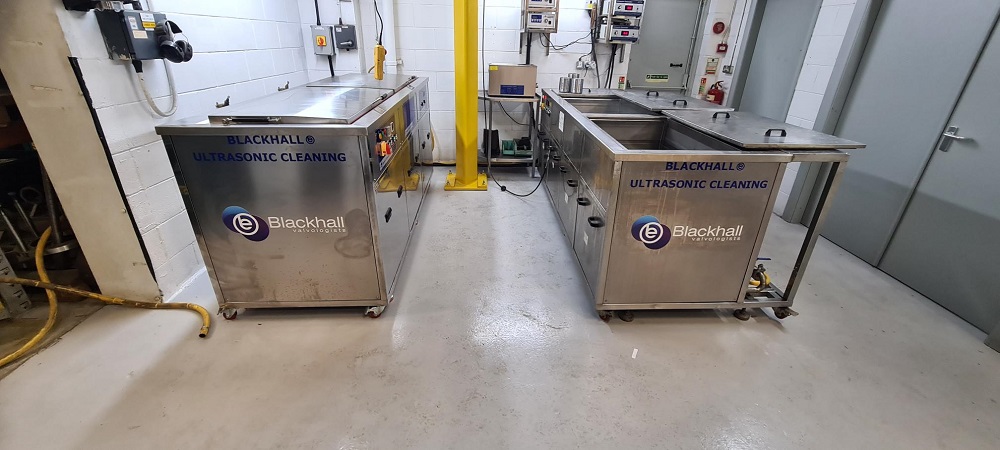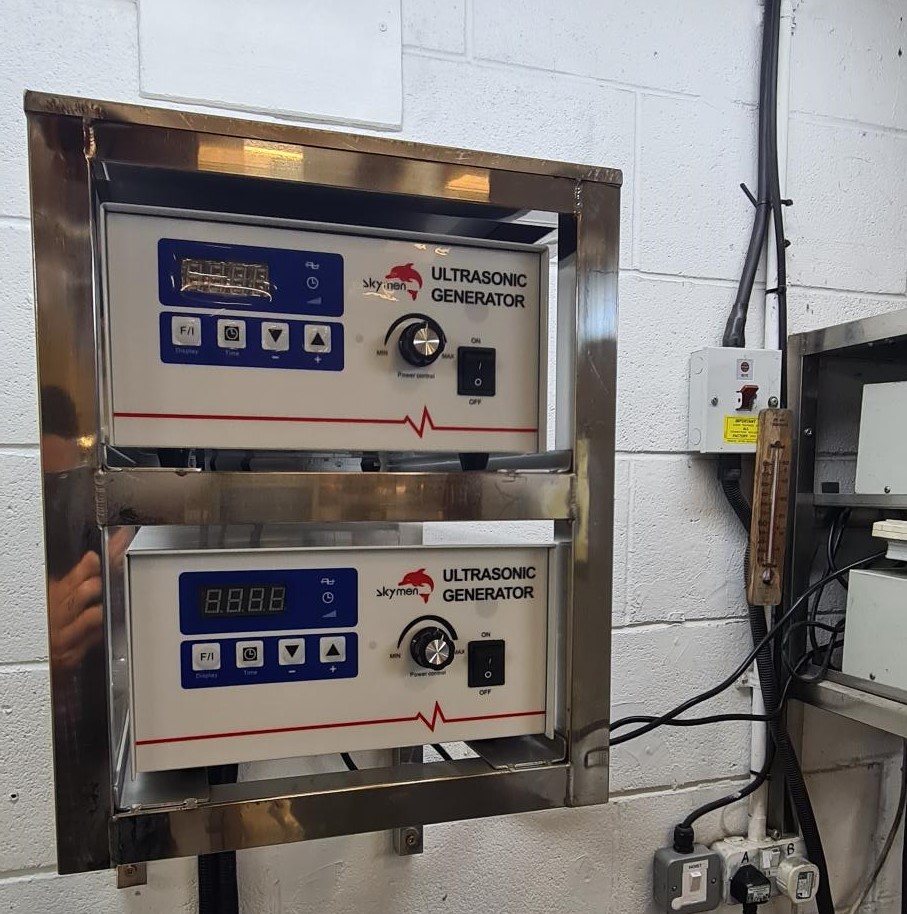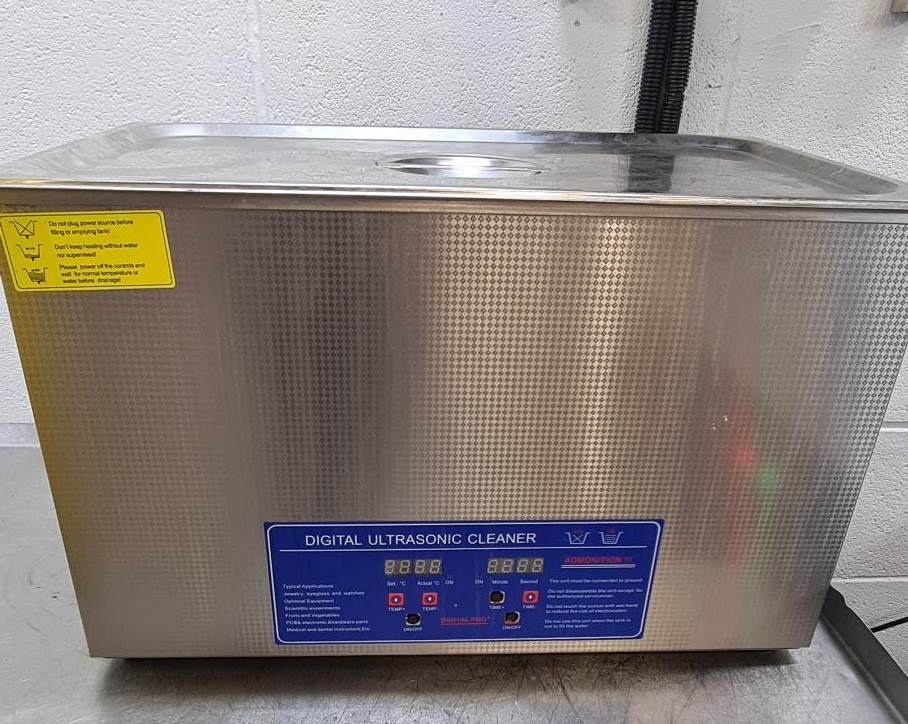Blackhall News
Raising the bar on Cryogenic Valve Standards

In the beginning
 In 1992, a now relatively forgotten film was released starring Mel Gibson and Jamie Lee Curtis, that wrapped itself around the idea of cryogenic freezing to preserve life. Its name was Forever Young if you have wish to research it any further. For the disinterested, it no doubt served as a small, albeit distorted, window into a field of science that had its genesis back in 1877, when Louis Paul Cailletet (a French physicist) and Raoul Pictet (a Swiss physicist) first succeeded in liquefying nitrogen. Beyond that I should think that cinema going audiences at the time paid scant attention to the real-world application of such a technique and its continual evolution over the years. The theme of the film was more ‘old-school romantic comedy’ as Neill Caldwell from The Dispatch put it, rather than an exploration of Physics after all.
In 1992, a now relatively forgotten film was released starring Mel Gibson and Jamie Lee Curtis, that wrapped itself around the idea of cryogenic freezing to preserve life. Its name was Forever Young if you have wish to research it any further. For the disinterested, it no doubt served as a small, albeit distorted, window into a field of science that had its genesis back in 1877, when Louis Paul Cailletet (a French physicist) and Raoul Pictet (a Swiss physicist) first succeeded in liquefying nitrogen. Beyond that I should think that cinema going audiences at the time paid scant attention to the real-world application of such a technique and its continual evolution over the years. The theme of the film was more ‘old-school romantic comedy’ as Neill Caldwell from The Dispatch put it, rather than an exploration of Physics after all.
However, from those tiny beginnings back in the late 19th century, an industry evolved, that once subject to the benefits of mass production has enhanced our life upon the planet to this day. An industry that now goes under the name of Cryogenic Engineering and that by definition encourages innovation and the subsequent discovery of a broader range of applications never envisioned at its outset.
So, what is cryogenics and cryogenic freezing?
The etymological base for the word cryogenics comes from the amalgamation of two Greek words (where else?) with ‘cryos’ meaning cold and ‘genis’ meaning generating. In engineering, cryogenics involves the study of very low temperatures, how to produce them and the resulting effect upon materials.
A universal definition of cryogenic freezing was endorsed at the 13th International Congress of Refrigeration held in Washington DC in 1971. There a -153°C threshold was established to distinguish it from conventional refrigeration. This decision was deemed a logical line of division since the boiling points of the permanent gases such as helium, oxygen, hydrogen and oxygen are below this point while the freon refrigerants and hydrocarbons have a boiling point above this mark. It is the benchmark that is adhered to today.
Cryogenic applications
 In terms of universal productive application, the technique straddles an array of sectors. In the food industry, cryogenic gases play a major role. It is possible to speed up cooling processes, thus preserving the quality and benefits of a product. Maintaining product quality is vitally important within the medical & pharmaceutical industries, especially in filling stations that hold liquid nitrogen and that are necessary in the treatment of many painful conditions. Cryogenic techniques are also used to produce, store and package medicines and drugs. In the automotive sector manufacturers use liquid nitrogen to perform shrink fit and leak detection. And within the electronics field, freezing techniques are employed to create inert production areas and for testing microchips. But perhaps the largest sector that uses cryogenic techniques is the gas industry – predominantly in the storage of liquefied natural gas (LNG). Here natural gas is condensed into a liquid at close to atmospheric pressure by cooling it to approximately −162 °C. The development of LNG storage also introduced a reliability into fuel networks (which was previously thought impossible) in that supplies could be re-gassed at short notice for deployment almost immediately. The list goes on.
In terms of universal productive application, the technique straddles an array of sectors. In the food industry, cryogenic gases play a major role. It is possible to speed up cooling processes, thus preserving the quality and benefits of a product. Maintaining product quality is vitally important within the medical & pharmaceutical industries, especially in filling stations that hold liquid nitrogen and that are necessary in the treatment of many painful conditions. Cryogenic techniques are also used to produce, store and package medicines and drugs. In the automotive sector manufacturers use liquid nitrogen to perform shrink fit and leak detection. And within the electronics field, freezing techniques are employed to create inert production areas and for testing microchips. But perhaps the largest sector that uses cryogenic techniques is the gas industry – predominantly in the storage of liquefied natural gas (LNG). Here natural gas is condensed into a liquid at close to atmospheric pressure by cooling it to approximately −162 °C. The development of LNG storage also introduced a reliability into fuel networks (which was previously thought impossible) in that supplies could be re-gassed at short notice for deployment almost immediately. The list goes on.
Cryogenic infrastructures
The application of cryogenic technologies obviously requires complex systems and subsequent infrastructures to deliver the product. Without transfer lines and storage dewars the means of transportation using cryogenic fluids is impossible. As the maxim goes, necessity is the mother of invention, and hardly more so than in the area of cryogenic freezing. Materials are constantly becoming stronger; insulation is improving at a rapid rate and high-end engineering ensures that liquid gases retain their quality. This means that any company that is involved must innovate and take onboard new techniques if it is to prosper and survive.
Playing a vital role
Larger organisations who are in the market for products that facilitate their grander operation are dependent upon SMEs to provide them with quality, manufactured items so they can carry out their raison d'être. In an area that cannot afford, both financially and environmentally (the World is watching), providing sub-standard engineered items is not an option. The supplier must focus on the end user’s requirements without compromise. This is where the cultivated mantra at Blackhall Engineering has served us exceptionally well over the years and made us a trusted partner – ‘driven by innovation and a strong commitment to customer satisfaction.’ A prime example is our recent investment in expanding the capacity of their ultrasonic cleaning system for cryogenic valves which showcases a dedication to meeting increasing demands, whilst ensuring unparalleled cleanliness, superior quality along with optimal functionality.
Ultrasonic cleaning – part of the process
Because cryogenic systems require such precision in order to function, the maintenance of cryogenic valves is vital. Their importance cannot be over emphasised. Kept in a normally closed position to keep contents secure they are designed to react to high-pressure which in-turn forces the valve into the open position to allow gas or other media to flow easily through the pipework. Such open flow will continue until the pressure again decreases, at which point it will swing back to prevent any leakage.
Ultrasonic cleaners are crucial in this maintenance, offering a process to allow complex components that require a contaminant-free atmosphere to operate effectively – penetrating places where it would be impossible to clean manually, thus ensuring safe operation and proper performance.
The principle behind ultrasonic cleaning is to convert the energy generated by the sound of the ultrasonic frequency source into a mechanical vibration through a transducer. The vibration generated by the ultrasonic wave is transmitted to the cleaning liquid through the cleaning tank wall, so that the resultant micro-bubbles in the liquid in the tank can keep vibrating under the action of the sound wave, removing dirt, contaminants, oil and grease residues from the valve components. This meticulous process guarantees a clean finish, eliminating the risk of valve malfunctions due to the unwanted freezing of substances at very low temperatures.
By far the biggest advantage of ultrasonic cleaning is that it is extremely efficient and only requires a few resources compared to alternative methods. This includes a reduction in how much water is needed, the energy required, the labour used as well as the time taken to effectively clean the components. Benefits that can be passed on down the chain. Coupled with this is the fact that this type of cleansing ensures valve reliability, performance, and longevity in demanding cryogenic applications, where precision and functionality are paramount.
Advantage through investment
By putting the customer’s needs first, we have shown again that at Blackhall Engineering, we will not shy away from adopting new technologies and practices by following through on a programme of continued investment. It’s an ethos that has seen us prosper as a company for over 50 years. As a consequence, we are recognised as an industry leader within the world of valve technology, delivering unparalleled reliability and performance through customer-centric innovation and faster lead times.
We have effectively solidified a reputation as the trusted choice for those who require top-tier cryogenic valve solutions.